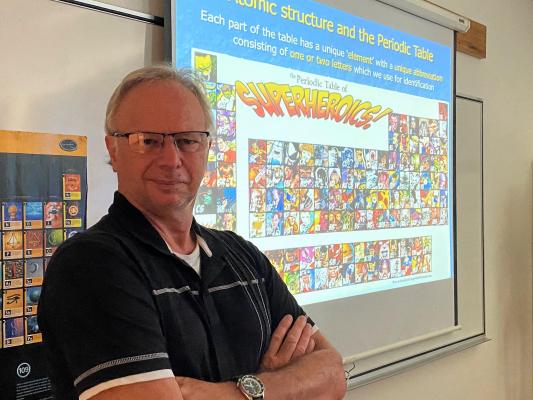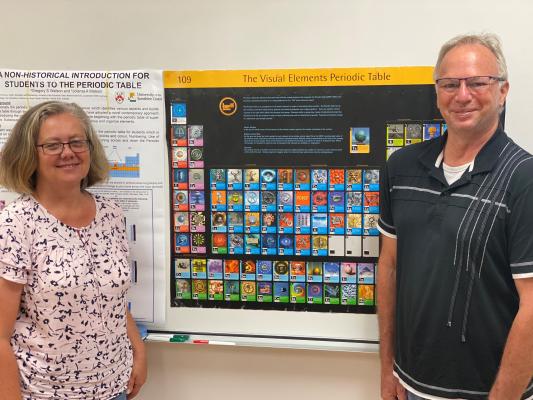USC academics have devised a cunning plan to harness the power of superheroes to help first-year Chemistry students better understand the complex concepts of the periodic table of elements.
In research published recently in the international Journal of Chemical Education, USC Fraser Coast Lecturers in Science Dr Greg Watson and Dr Jolanta Watson outlined how they used ‘pseudo’ periodic tables filled with superheroes, food types and iPad apps, as an effective teaching strategy.
Dr Greg Watson said the periodic table, with its 118 elements arranged into symbols, unique chemical properties and atomic numbers, was the most important and fundamental tool of chemistry.
“Many students starting a science-based degree do not always arrive with background knowledge of chemistry and it is fair to say that a significant number find its complex concepts – including the periodic table – abstract and difficult to understand,” he said.
“We wanted to find a novel way to introduce the periodic table to students in a simplistic, memorable and familiar way to help them understand how to interpret chemical properties and relationships between the elements.”
Their solution was to incorporate superheroes, along with everyday items, into their first-year chemistry courses at USC, with up to 95 percent of students reporting they found the presentations useful.
A comparison of students’ mid-semester exam results before and after the new teaching method was implemented showed an increase of 15 percent in correct answers, up to almost 84 percent.
Dr Watson said the strategy could be adapted to any level of the education system, from primary to tertiary.
“Rather than introducing the periodic table in all its grandeur and complexity, as it is shown in traditional chemistry textbooks, we use a series of tables of alternative objects to demonstrate the key concepts,” he said.
“First, we use a table to introduce the general layout of the periodic table, with each element location replaced with a single superhero such as Superman, Wonder Woman, The Green Lantern and so on.
“This forms the basis for discussions on how best to group the superheroes based on their ability, strength and gender – just as the elements in the real periodic table are arranged based on their own set of properties.”
iPad apps in the form of the periodic table are then used to demonstrate colour coding and grouping of objects, with the students gradually progressing to other examples, including tables based on meat types, and fruits and nuts.
Dr Watson said analogies related to aspects of the periodic table helped explain its symbols and the concept of combining elements to form larger units and compounds.
“For instance, we use the analogy of being a waiter using shorthand to write that a customer has ordered two portions of squid (Sq) and one lobster (Lb), which can be simply expressed by Sq2Lb,” he said.
The ‘Periodic Table of Fruit and Nuts’ helps to demonstrate that objects can be arranged based on physical characteristics and trends, including changes in atomic size and composition.
“For example, transitions left to right across the table become less fruity and more nuttier, and vice versa, which is an analogy to transitioning from metallic to non-metallic elements across the periodic table,” Dr Watson said.
The research by the husband and wife academics was conducted in collaboration with Dr David Green from the University of Birmingham.








